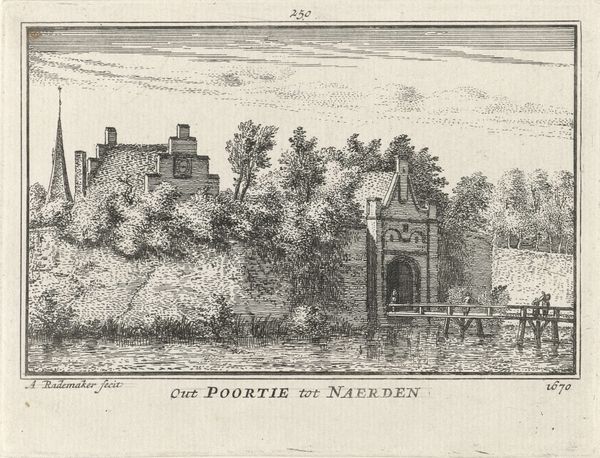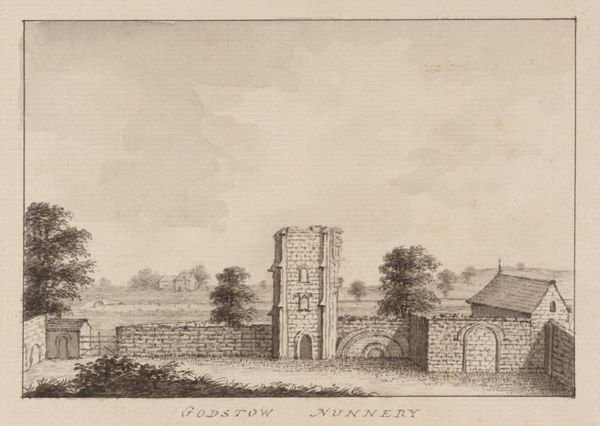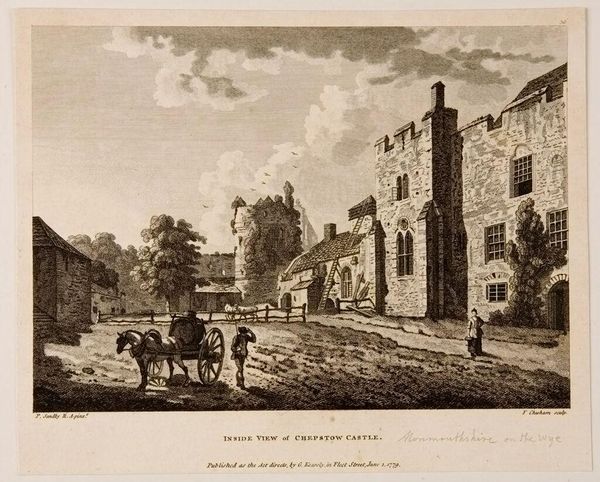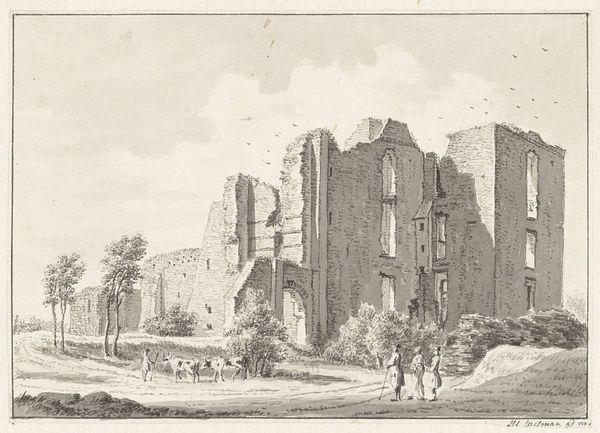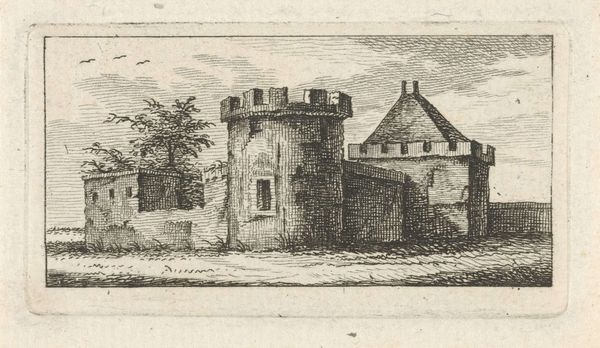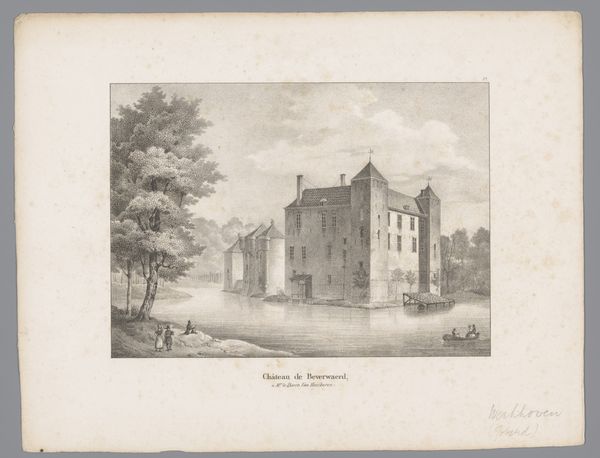
Gezicht op de ruïne van Huis Ter Meer bij Maarssen, 1676 1727 - 1733
0:00
0:00
print, engraving
#
baroque
# print
#
landscape
#
line
#
cityscape
#
history-painting
#
engraving
#
realism
Dimensions: height 80 mm, width 115 mm
Copyright: Rijks Museum: Open Domain
This print, titled "View of the Ruin of Huis Ter Meer near Maarssen," was made in 1676 by Abraham Rademaker, a Dutch artist known for his topographical prints. The image was created using an etching technique, where lines are incised into a metal plate with acid, then inked and pressed onto paper. The fine lines of the etching process allow for a great level of detail, capturing the texture of the ruined stone and the surrounding foliage. Note the contrast between the crumbling structure and the carefully rendered figures in the foreground. Rademaker likely used tools such as etching needles, acids, and printing presses, each of which demanded skilled labour. The print functions as a historical document, showing a specific site at a particular moment in time. But it also invites us to reflect on themes of decay, the passage of time, and the relationship between architecture and nature. Rademaker was not just recording the world around him, but transforming it through the skilled application of his craft. This act of making is every bit as important as the subject itself.
Comments
No comments
Be the first to comment and join the conversation on the ultimate creative platform.
